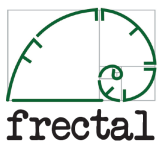Change is driven by Information
Amidst the complexity of change, we have looked at the role of leadership and an exploration of process as key elements. Another key element that must be considered at every turn is the role of information. Information is central to and a by-product of many processes.
Information is needed at the frontline, by the middle managers and the high level strategists and researchers. Information is at the heart of many/most public services such as healthcare and education, many industries and most scientific tasks. In many ways information is an essential ingredient of the world around us.
The invention of the printing press by Gutenberg in the 15th Century and the World Wide Web by Berners Lee in 1990 have been two pivotal moments in the history of our world. These help illustrate the dictum that information is power and by making information available to others it is clear how transformative that power can be in driving change.
Here again we use the Cynefin framework to discuss the role of information in change.
Let us begin as usual with Chaos.
Chaos.
The predominant feature of a chaotic situation is noise. The solution needed here are simple messages (e.g. Smoke Alarm noise, “Everybody please leave”). These clear information instructions can make all the difference in a chaotic system and the ability to communicate such information is one of the hallmarks of effective leadership.
Complex
In a more complex environment, patterns begin to emerge from the noise. Those patterns can range from data that can be structured (e.g. in the financial world that is numbers) to the more narrative end of communication exchange.
Within the modern world the cry of information overload can be a significant problem in the modern world. Facing a mass of complex information can be a recipe for poor decision making or worse no decision making at all.
Here again the effective leader will be able (perhaps with a small multidisciplinary group) to spot patterns from within the mass of information (e.g. very common cross organisational problems)and then probe with solutions accordingly. Those patterns may emerge from a structured analysis of the information available, or may come from the more narrative end of the information spectrum (in the form of corridor conversations etc).
From a scientific background I was taught the value of structured data above all else (e.g. statistics). Yet over time I had come to appreciate the value of narrative information also. While somewhat unorthodox at first, this now fits very much with my experience in healthcare, where patients stories can reveal the most important detail and other important stories emerge from critical incidents, to interactive teaching sessions to coffee room conversations….
Complicated
In recent times, many complicated fields have developed their own bodies of structured information and knowledge. As this body of information and knowledge becomes the basis of their working language hence it may be difficult to develop joint working efforts between these groups who have very differing vocabularies..
One could argue that the current state of international economic order was a result of the misunderstanding that the key to success was in deeply complicated information structures such as Collateral Debt Obligations structures that few could understand or challenge with devastating results.
It is my experience that isolated professional groups can develop niche and siloed structures for information and knowledge management which can be a confounding factor in organisational change and thwart efforts to deliver cross organisational change at scale. I have noted that between those involved in the fields of healthcare, management and information technology and indeed within those respective fields.
(This may help explain my efforts at writing aimed at a multidisciplinary audience looking for a common framework (and therefore language) to tackle our challenges)
Simple
Simple information has been explained in several examples within these articles as best exemplified by “the numbers”. That is those ubiquitous algebraic pieces of data that can be added, counted, sliced and diced…
We now move on to look at the common change pattern involving technology and standards.
References
| Greenhalgh, T, “Narrative based medicine in an evidence based world”, BMJ. 1999 January 30; 318(7179): 323–325. |
http://www.ncbi.nlm.nih.gov/pmc/articles/PMC1114786/
Von Baeyer, H C (2003) “Information- The New Language of Science”, Weidenfeld & Nicolson, London





Leave a comment